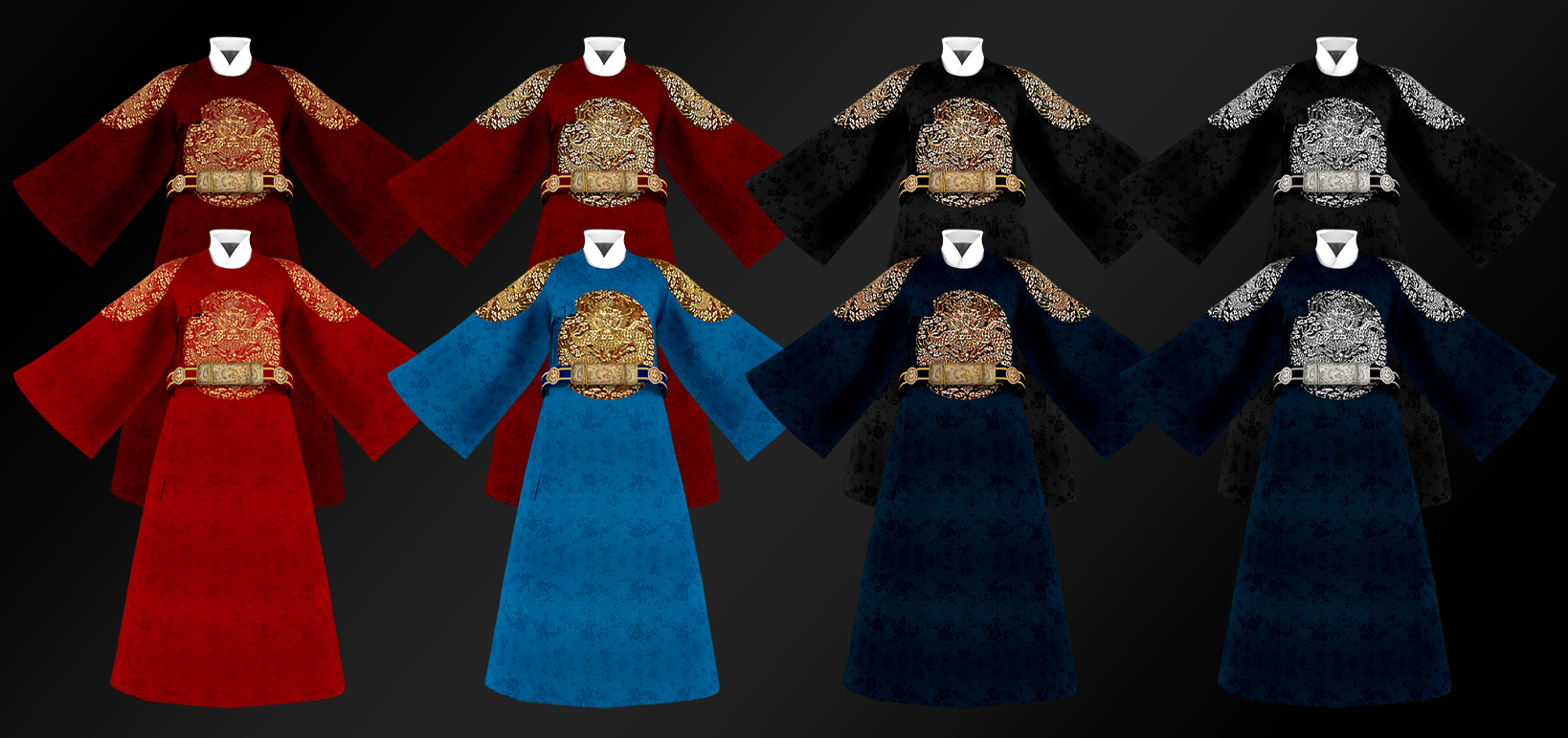The Korean Gonryongpo stands as one of history’s most magnificent royal garments, representing not just the pinnacle of Korean craftsmanship but also embodying centuries of cultural symbolism and sovereign power. This distinctive royal attire, worn by kings and crown princes during the Goryeo and Joseon dynasties, continues to captivate modern audiences with its intricate dragon motifs and profound cultural significance.
The Historical Evolution and Significance of Royal Korean Attire
The journey of Korean royal clothing through the ages reveals a fascinating story of power, artistry, and cultural identity. Before delving into the specific elements of the Gonryongpo, it’s essential to understand its place within the broader context of Korean royal fashion and ceremonial dress.
The Origins of Royal Korean Dress
The development of Korean royal attire traces back to ancient times, influenced by both indigenous Korean customs and cultural exchanges with neighboring civilizations. During the Three Kingdoms period, distinctive styles emerged that would later influence the creation of the Gonryongpo. The gradual evolution of these royal garments reflected changing diplomatic relations, particularly with China, while maintaining uniquely Korean characteristics.
Early Korean kingdoms established their own clothing protocols, with each royal court developing specific regulations about colors, patterns, and materials. These early traditions laid the groundwork for what would eventually become the highly codified system of royal dress during the Goryeo and Joseon periods.
Symbolic Elements and Design Philosophy

The Korean Gonryongpo incorporates multiple layers of symbolism within its design. The most prominent feature, the dragon motif, represents celestial power and divine authority. The number of claws on the dragon, the positioning of clouds and waves, and even the specific shade of blue or red used in the robe all carried deep symbolic meaning.
Traditional Korean color theory played a crucial role in the design, with each color carefully chosen to represent different aspects of royal authority and cosmic harmony. The integration of these elements wasn’t random but followed strict philosophical principles derived from Confucian and Buddhist traditions.
Manufacturing Techniques and Materials
The creation of a Gonryongpo required exceptional skill and precision. Royal craftsmen employed specialized techniques passed down through generations, including intricate embroidery methods unique to Korean royal garments. The selection of materials, from the finest silks to specific types of thread for embroidery, followed strict guidelines.
The manufacturing process could take several months, with multiple artisans working on different aspects of the robe. The techniques used to create these garments have become an important part of Korea’s intangible cultural heritage, with some methods still being preserved and practiced today.
Cultural Impact and Ceremonial Functions
The influence of the Korean Gonryongpo extended far beyond its role as royal attire, shaping various aspects of Korean court life and ceremony. Its presence in royal rituals and state functions helped establish and maintain social hierarchy while reinforcing the monarch’s authority.
Role in Court Ceremonies

The Gonryongpo played a central role in various court ceremonies, from daily morning audiences to grand state occasions. Each type of ceremony required specific variations of the robe, with subtle differences in design elements indicating the nature and importance of the event.
During major state rituals, the sight of the king in his Gonryongpo created a powerful visual representation of royal authority and cosmic harmony. These ceremonies weren’t merely performances but were considered essential for maintaining the proper order of society and nature.
Social Hierarchy and Status Symbols
The right to wear certain elements of the Gonryongpo was strictly regulated, with specific features reserved for different ranks within the royal family. These regulations extended to the type of dragons depicted, the colors used, and even the specific patterns in the background.
The influence of these dress codes extended beyond the palace walls, affecting how nobility and officials dressed and conducted themselves. The Gonryongpo became a reference point for other forms of ceremonial dress throughout Korean society.
Preservation and Museum Collections
Today, surviving examples of the Korean Gonryongpo are carefully preserved in museums around the world. These precious artifacts provide valuable insights into historical manufacturing techniques, artistic styles, and cultural practices.
Modern conservation methods have helped preserve these delicate garments for future generations, while detailed study has revealed previously unknown aspects of their construction and symbolism. Museums play a crucial role in educating the public about the significance of these royal garments.
Revival and Modern Interpretations
In recent years, there has been a remarkable resurgence of interest in traditional Korean attire, particularly the Gonryongpo. This revival encapsulates not only a fascination with historical garments but also a deeper inquiry into Korean identity and heritage.
Contemporary designers have begun to reinterpret elements of the Gonryongpo, blending traditional motifs with modern aesthetics. These interpretations allow younger generations to appreciate their cultural lineage while enjoying fashion that feels relevant in today’s world.
Royal garments have also become more accessible through hanbok rental services, allowing people to wear traditional attire for cultural experiences, photo shoots, and special occasions. At the same time, historical K-dramas frequently showcase characters in royal attire, bringing traditional garments to a global audience. This cross-cultural exchange highlights how royal garments transcend their original contexts, inviting new generations to explore Korea’s rich tapestry of art and tradition.
The Global Influence of Korean Royal Garments
The magnificence of the Korean Gonryongpo extends beyond the borders of Korea, influencing international perceptions of Asian or specifically East Asian royal attire. The artistry displayed in Korean garments has intrigued scholars, fashion enthusiasts, and historians alike, leading to collaborative exhibitions and scholarly research worldwide.
Cultural Exchange and Aesthetics
Historically, the sharing of ideas between Korea and neighboring countries, especially China and Japan, significantly impacted royal dress. While rooted in distinct traditions, commonalities emerged that reflect broader East Asian aesthetic principles–symmetry, balance, and the revival of nature-inspired themes.
Today, as global appreciation for diverse cultures grows, the intrigue surrounding Korean Gonryongpo helps frame conversations about cultural inheritance and the importance of maintaining traditional crafts amid globalization. Educational exchanges and art exhibitions serve to share these cultural practices on an international platform, fostering mutual understanding and respect.
Korea’s unique garment history encourages deeper questioning of how nations curate their identities through textiles and design. As modern society grapples with past narratives, the influence of the Gonryongpo serves as a reminder of the elegance and complexity inherent in traditional methodologies.
Academic Research and Documentation
The study of the Gonryongpo has attracted considerable academic attention, encompassing fields ranging from history to anthropology and even textile sciences. Scholars aim to document not only the aesthetics of these robes but also their societal implications throughout different eras of Korean history.
Research encompasses various aspects, including historical usage, garment construction, and socioeconomic factors that influenced style. Such inquiries underline the robe’s role as a cultural artifact—each seam, thread, and embroidery conveys stories about the people who wore them and the dynasties they represented.
Additionally, academic efforts to preserve this knowledge through documentation, writing, and digitization amplify awareness and appreciation of Korean traditional attire. By archiving knowledge and sharing it in academia and community contexts, scholars create pathways for ongoing exploration of Korea’s royal heritage.
International Collaborations and Exhibitions
Exhibitions that feature the Gonryongpo have become platforms for showcasing the garment’s historical and cultural significance. Global museums now recognize the importance of Korean royal garments, collaborating to curate traveling exhibitions that introduce audiences to this stunning aspect of Korean culture.
Such initiatives encourage dialogue about ostentatious artistry juxtaposed with underlying themes of power and governance intrinsic to royal obligations. Moreover, the ability to witness these garments in person deepens audiences’ connections to the intricate artwork and philosophies entrenched in their designs.
Through careful curation, museums not only highlight the aesthetic brilliance of the Gonryongpo but also weave narratives that celebrate cultural diversity, engage visitors in challenging discussions about representation, and promote an appreciation for shared human experiences.
Conclusion

The legacy of Korean royal robes like the Gonryongpo transcends mere fabric and stitching; it encapsulates a historical journey rich with symbolism, cultural significance, and artistic expression. As we delve deeper into their forms and functions, we uncover layers of meaning that speak to Korea’s sovereign past and its interactions with neighboring cultures.
As contemporary society continues to embrace these regal artifacts, we witness a fusion of the past and present—a vibrant homage to tradition while paving new pathways for future explorations of identity and creativity. The majestic allure of the Gonryongpo, with its dragons, colors, and ancestral artistry, reminds us not only of Korea’s cultural heritage but also of the universal narratives that bind us together across time and space. In this interconnected world, the reverberations of royal attire challenge us to explore what it means to wear our histories proudly as we step boldly into the future.
✉️ Stay Connected — Subscribe for Weekly Updates
Discover timeless stories, practical wisdom, and beautiful culture — delivered straight to your inbox.
*We only share valuable insights — no spam, ever.






